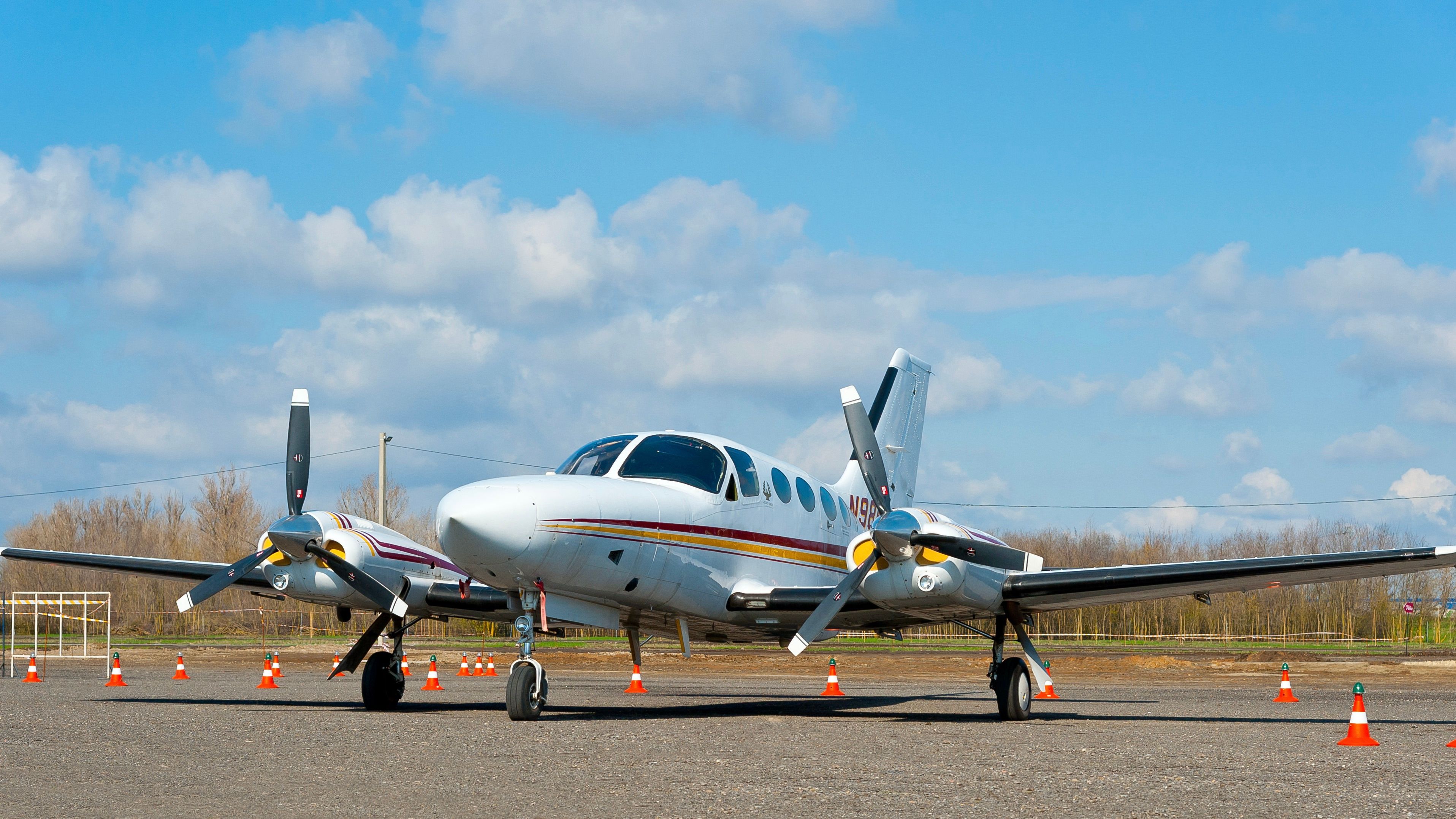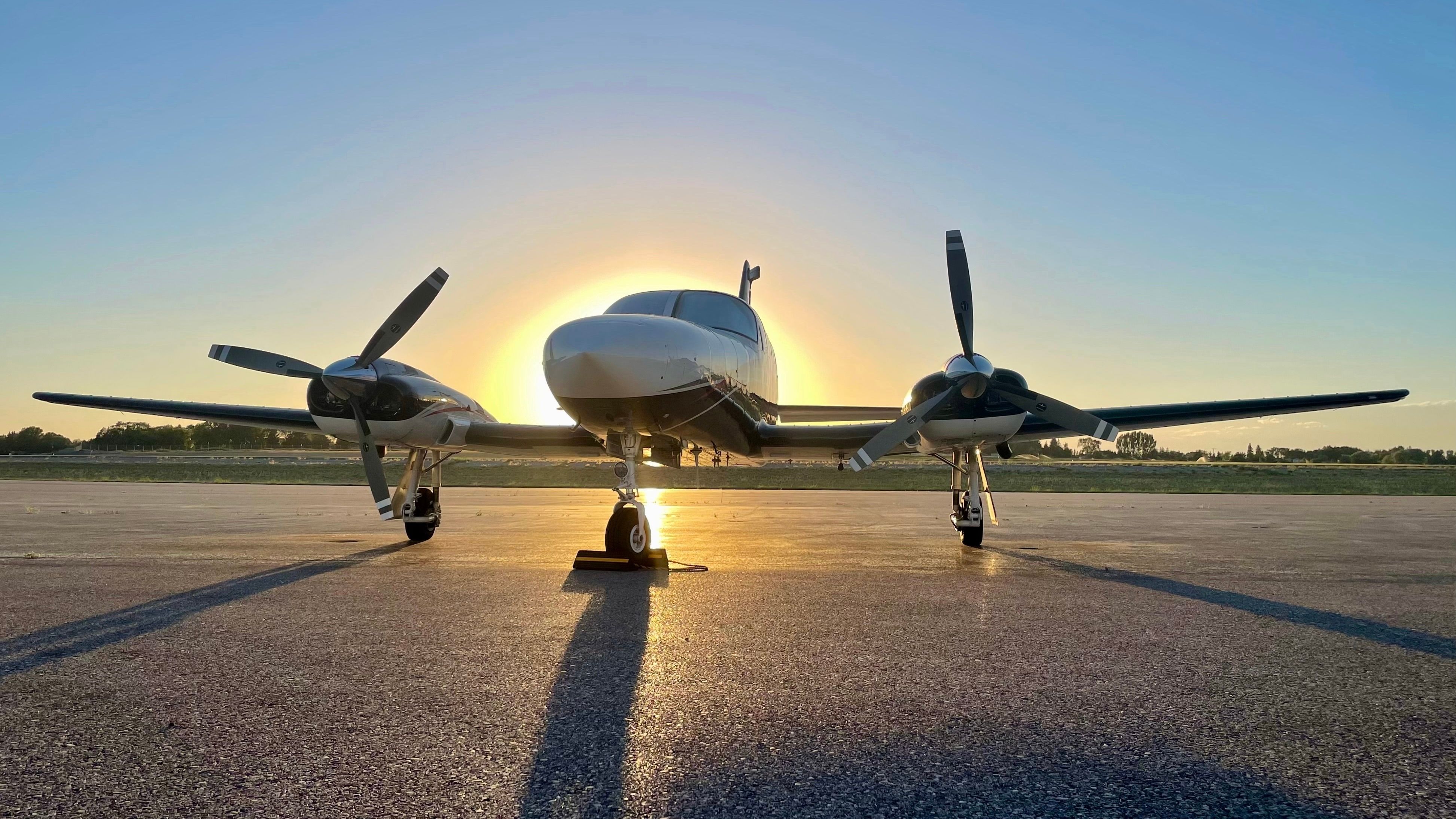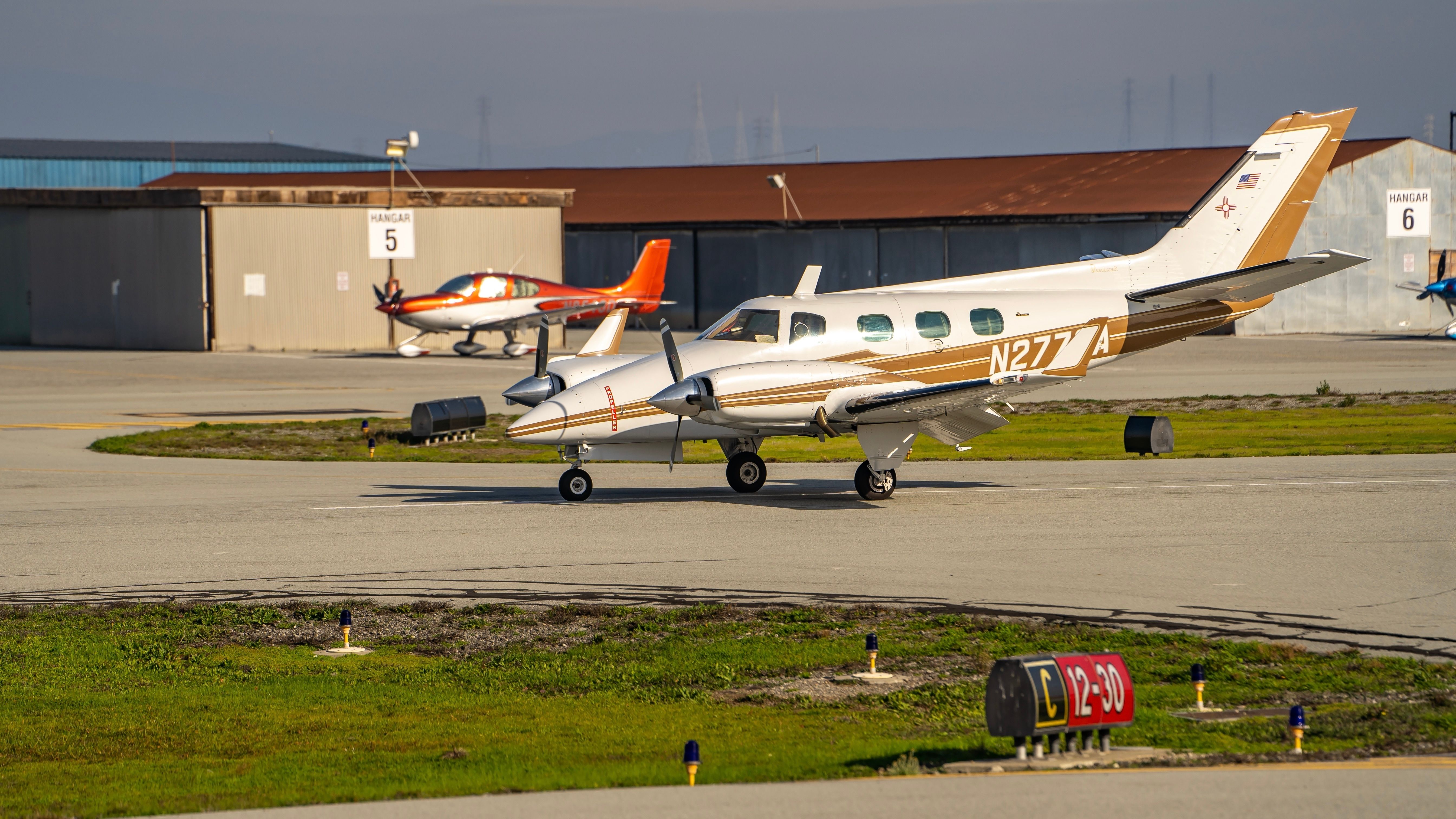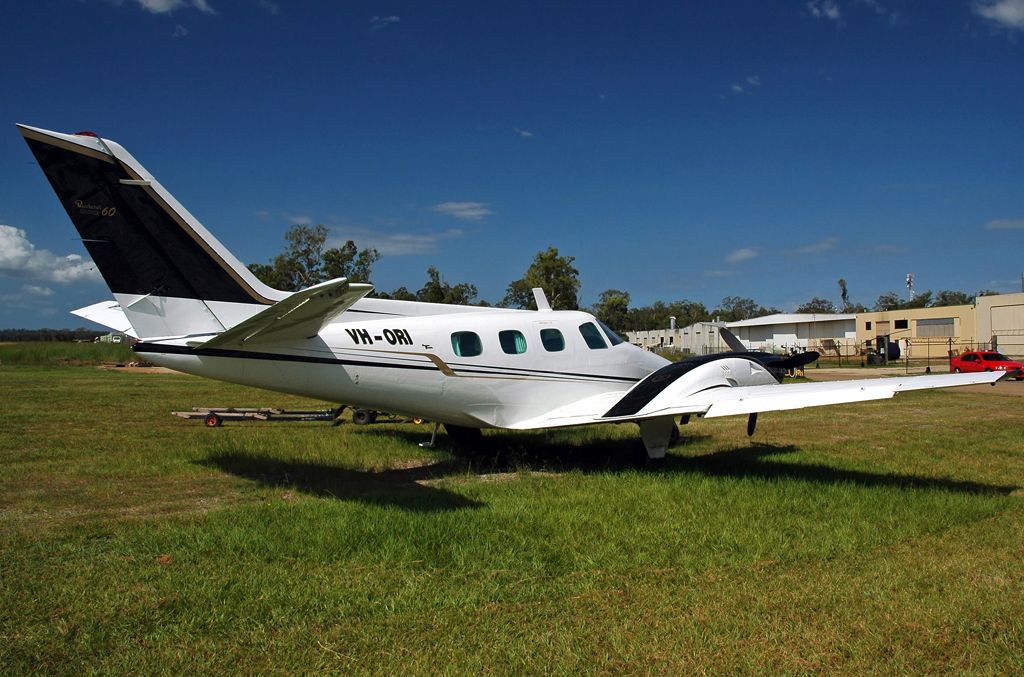Summary
- Cessna Golden Eagle: 6-7 seat light transport aircraft with twin engines, produced from 1967 to 1985, with 1,916 models built.
- Beechcraft Duke: Retractable tricycle landing gear aircraft with two turbocharged piston engines, produced from 1968 to 1983, with 596 models built.
- Golden Eagle was more practical and easier to maintain, while the Beechcraft Duke was advanced for its time and is popular with enthusiasts and private owners.
Both the Cessna Golden Eagle and the Beechcraft Duke are twin-engined aircraft built in the 1960s and were considered rivals at the time. They both continued production until the early 1980s in very differing numbers. So, let’s take a look at the two aircraft and compare them, and see why they were popular.
Photo: Yuri D-3 | Shutterstock
Introduction to the Cessna Golden Eagle
The Cessna Golden Eagle is also known as the Cessna 421 and is an aircraft with six or seven seats used for light transport. It was produced by Cessna in May 1967 and introduced the following year and certified by the FAA. It has Stabila-Tip fuel tanks on the wing tips and electro-mechanical landing gear. It has a low wing cabin and entry is by a door behind the wing on the left side. The aircraft has two wing-mounted Continental GTSIO-520-D engines, creating 375 horsepower each.
Variants of the aircraft
Cessna 421A
In 1969, the aircraft now known as the Cessna 421A, featured some new developments. The fuselage was extended by three inches and it had five gallons more fuel capacity. This increased the aircraft’s gross weight by 40 pounds.
Cessna 421B
In 1971, the aircraft was improved again, and the empty and gross weight was increased. The wingspan was increased by two feet, resulting in the aircraft’s ceiling being raised by 5,000 feet. Its nose was stretched by two feet and enclosed a baggage compartment. In 1975, the aircraft was offered with equipment enabling flight into known icing conditions. Up to eight seats could be fitted in the cabin. The engines had the same horsepower but were now the Continental GTSIO-520-H engines.
Cessna 421C
In 1976, the Cessna 421C variant was introduced. It featured ‘wet wings’ where the wings were sealed, fuel kept inside, and the wingtip tanks were removed. A trailing link landing gear was added. The Continental engines were now the GTSIO-520-H or GTSIO-520-N.
The Cessna 421B and 421C were also called the Golden Eagle or Executive Commuter.
Photo: Austin Deppe | Shutterstock
Aircraft specifications 421C
General characteristics
- Crew: One or two
- Capacity: Six passengers on average
- Length: 36 ft 4+5⁄8 in (11.09 m)
- Wingspan: 41 ft 1+1⁄2 in (12.53 m)
- Height: 11 ft 5+3⁄8 in (3.49 m)
- Wing area: 215 sq ft (20.0 m2)
- Empty weight: 4,501 lb (2,042 kg)
- Max takeoff weight: 7,450 lb (3,379 kg)
- Fuel capacity: 206 US gal (172 imp gal; 780 L) normal (usable capacity), 262 US gal (218 imp gal; 990 L) with optional wing tanks
- Powerplant: 2 × Continental GTSIO-520-L turbocharged, fuel-injected engines, 375 hp (280 kW) each
- Propellers: 3-bladed McCauley propellers
Performance
- Maximum speed: 256 kn (295 mph, 474 km/h) at 20,000 ft (6,100 m)
- Cruise speed: 240 kn (280 mph, 440 km/h) at 25,000 ft (7,600 m) (75% power)
- Range: 1,487 nmi (1,711 mi, 2,754 km) at 25,000 ft (7,600 m), econ cruise speed
- Service ceiling: 30,200 ft (9,200 m)
- Rate of climb: 1,940 ft/min (9.9 m/s)
- Takeoff distance to 50 ft (15m): 2,323 ft (708 m)
- Landing distance from 50 ft (15 m): 2,293 ft (699 m)
Sales and popularity
The Cessna Golden Eagle was extremely popular. In the first year alone, Cessna sold 200 of the aircraft. It was produced from 1967 until Cessna ceased production of the Golden Eagle in 1985 when 1,916 aircraft were built, and 1,901 were delivered.
Models built
- Cessna Golden Eagle 421: 200 built
- Cessna Golden Eagle 421A: 158 built
- Cessna Golden Eagle/Executive Commuter 421B: 699 built
- Cessna Golden Eagle/Executive Commuter 421C: 859 built
Photo: Iv-olga | Shutterstock
Introduction to the Beechcraft Duke
Often compared to the Cessna Golden Eagle, the Beechcraft Duke reigned almost just as long. Also known as the Beechcraft 60 Duke, the fixed-wing aircraft has a retractable tricycle landing gear and two turbocharged piston engines. It first took flight in December 1966, received FAA certification in February 1968, and Beechcraft started delivery of the aircraft in July 1968.
The aircraft has club seating in the cabin and the aircraft entry is through a rear left airstair door. The Beechcraft Duke has turbocharged Lycoming TIO541-B4 engines with 380 horsepower each. It was seen as a highly advanced aircraft of its time.
Variants of the Beechcraft Duke
The first variant was the A60, which was released in 1970. The cabin was improved, and more efficient turbochargers and elevators were fitted. In 1974, the variant B60 was introduced with a renewed interior and improved turbochargers for better engine efficiency. Some of the aircraft were modified with Pratt and Whitney Canada PT6A-21 engines, known as the Royal Turbine Duke conversion. This increased fuel capacity and shortened take-off length but increased fuel burn and lowered the ceiling to 28,000 feet.
Models built
- Beechcraft 60: 125
- Beechcraft A60: 121
- Beechcraft B60: 350
Aircraft specifications B60
General characteristics
- Crew: 1
- Capacity: 5 passengers
- Length: 33 ft 10 in (10.31 m)
- Wingspan: 39 ft 3+1⁄3 in (11.972 m)
- Height: 12 ft 4 in (3.76 m)
- Wing area: 212.9 sq ft (19.78 m2)
- Empty weight: 4,275 lb (1,939 kg)
- Max takeoff weight: 6,775 lb (3,073 kg)
- Fuel capacity: 142 US gal (118 imp gal; 540 L) usable (normal), 232 US gal (193 imp gal; 880 L) with additional optional tanks
- Powerplant: 2 × Lycoming TIO-541-E1C4 turbocharged engines, 380 hp (280 kW) each
- Propellers: 3-bladed Hartzell constant speed
Performance
- Maximum speed: 248 kn (285 mph, 459 km/h) at 23,000 ft (7,000 m)
- Cruise speed: 178 kn (205 mph, 330 km/h) at 20,000 ft (6,100 m), 45% power
- Range: 1,227 nmi (1,412 mi, 2,272 km) at 20,000 ft (6,100 m), 45% power, 45 min reserves, max optional fuel
- Service ceiling: 30,000 ft (9,100 m)
- Rate of climb: 1,601 ft/min (8.13 m/s)
- Takeoff distance to 50 ft (15m): 2,626 ft (800 m)
- Landing distance from 50 ft (15m): 3,065 ft (934 m)
Although the Beechcraft Duke was a good performer, it only had moderate sales. The aircraft used complicated technology, and maintenance costs were high. Beechcraft ceased production of the aircraft in 1983. Most of the Beechcraft Dukes still flying today have their original equipment. The systems, parts, and approved technicians are now hard to find, and owners of the aircraft do not fly the aircraft for its economy.
In comparison, Cessna produced 1,916 models of the Golden Eagle, whilst Beechcraft only built 596 of the Beechcraft Duke. Although similar aircraft of the time and somewhat rivals, it is clear that the Golden Eagle was more practical and easier to maintain. The Beechcraft Duke, although popular on its own merits and advanced for its time, will continue to be popular with aircraft enthusiasts and private owners due to its unique design.





